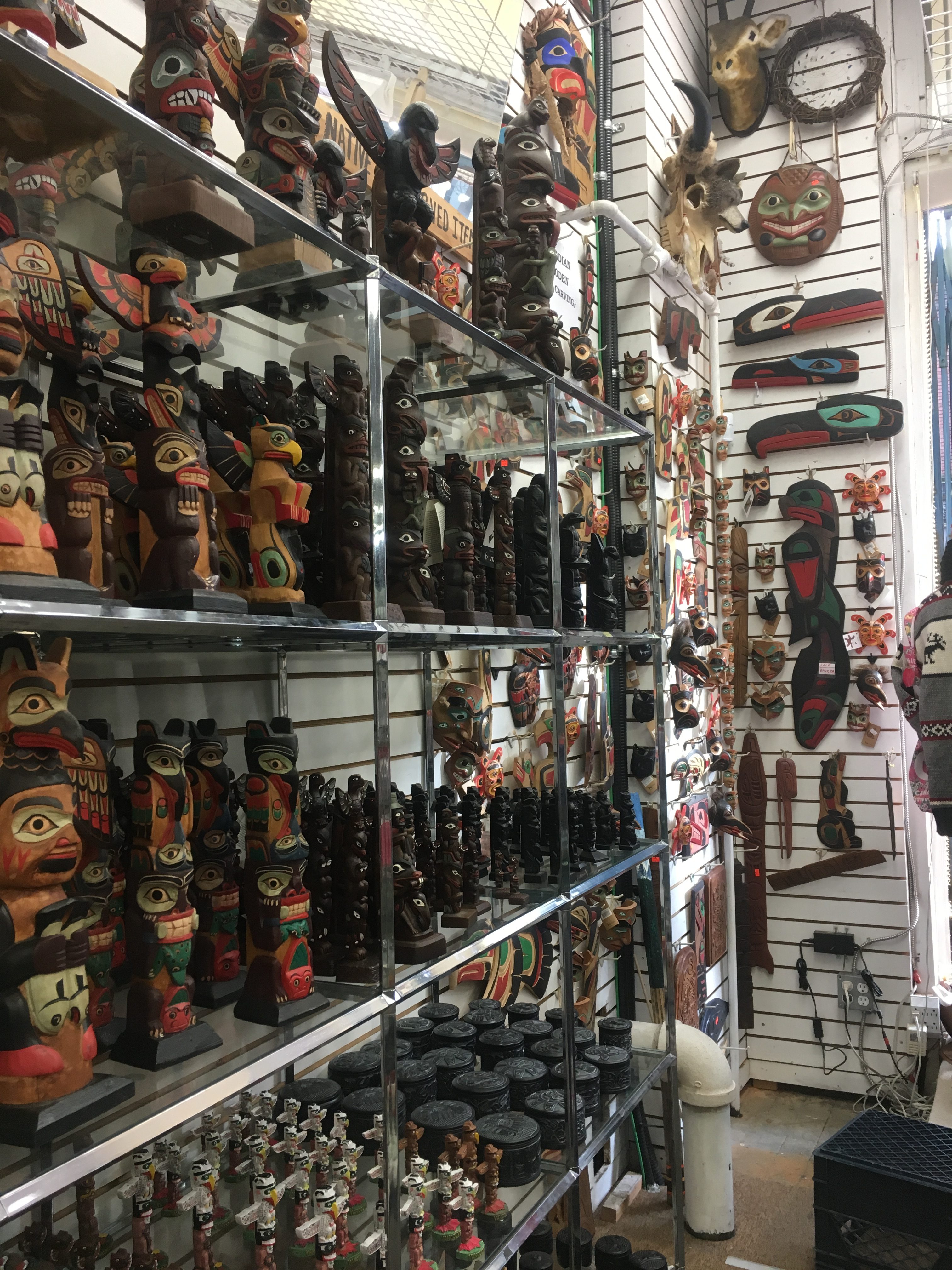The Exploitation of a Culture
I remember the first time I ever visited Gastown late last year. It was raining and my friends and I were trying to find shelter from the rain and ducking into these souvenir stores lined along Water St. Upon entry, mostly everything you could see was just the Canadian maple leaf plastered on everything from lighters to coffee mugs to t-shirts but among this mix were items stereotypically associated with “Indigenous culture” being sold. In this particular store where I took this picture, a wooden sign hung above the shelves that read “Native Carved Items” with rows up rows of totem poles and masks stereotypically associated with First Nations sitting below it.
To the rest of the world, Canada is seen as this peaceful and friendly country where indigenous and non-indigenous people alike live in harmony with one another. In reality, however, Canada has had a long history of violence against the Aboriginal people from residential schools to discriminatory laws like the Indian Act. Even today, Aboriginals are continually oppressed with poverty rates for Aboriginal children being two to three times higher than in any other ethnic group (Corgiall-Brown, 2016, p. 145). Aboriginals also only make about 70 per cent of the national average income in Canada (Corgiall-Brown, 2016, p. 145). Although to most tourists, Canada is seen as this multicultural haven home to beautiful provincial parks, it is a place where colonialism and oppression still continues to exist.
Using the label “Indigenous culture” we market these items as a piece of true Canadian culture that tourists must have. By doing so, we sweep the oppression that these Aboriginals face under the rug and continue to exploit their culture for economic means. We use their sacred artwork like totem poles that were meant to represent each Aboriginal tribe’s history and sell them to tourists simply looking to show off their recent travels. Upon further investigation, these totem poles were not even made in Canada let alone by Aboriginals. Rather, they were mass produced by exploited workers in China and then sent to these souvenir shops halfway across the world. This shows that these simple souvenirs are not created through the exploitation of one culture but many. As mentioned in lecture, this process is part of a commodity chain whereby countries like Canada look to the global south to produce cheaper “Canadian” goods.
This erasure of First Nations culture is an example of the continued practice of oppression that has been used since colonial times. By selling these products stereotypically associated with First Nations culture, their culture is exploited and used to sell a certain image of “Canadianness” for profit. An image of multiculturalism and peace where we still have an “exotic” people but whom are well integrated within our society. This not only leads to the continued oppression of Aboriginals but the selling of this “good” image of Canada to tourists that is simply untrue.
References
Corrigall-Brown, C. (2016). Imagining sociology: An introduction with readings (First ed.). Don Mills, Ontario, Canada: Oxford University Press.
